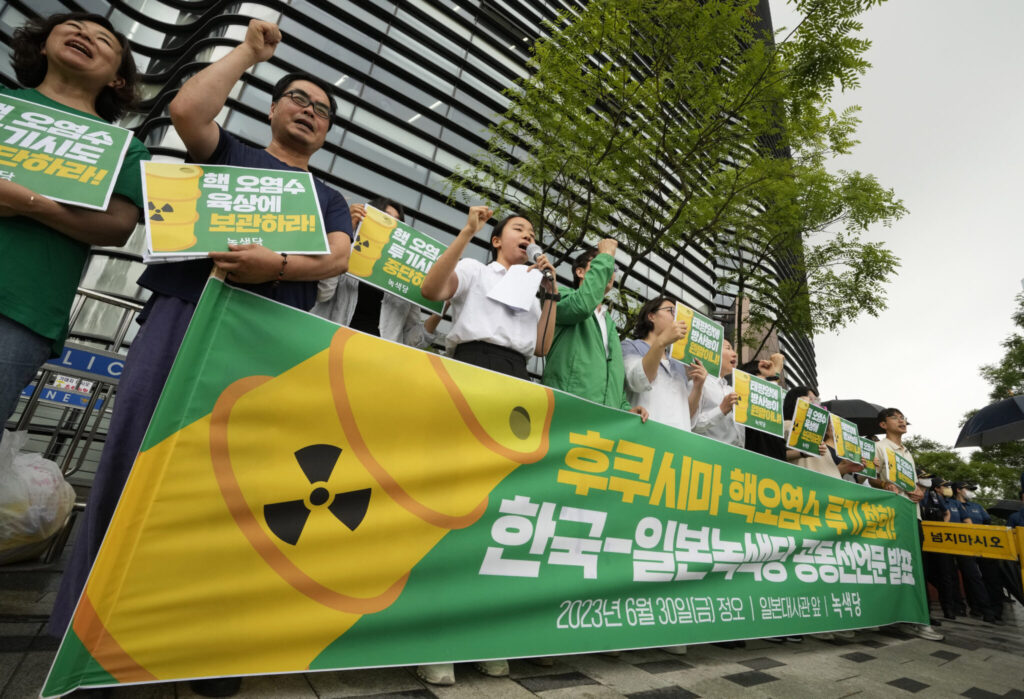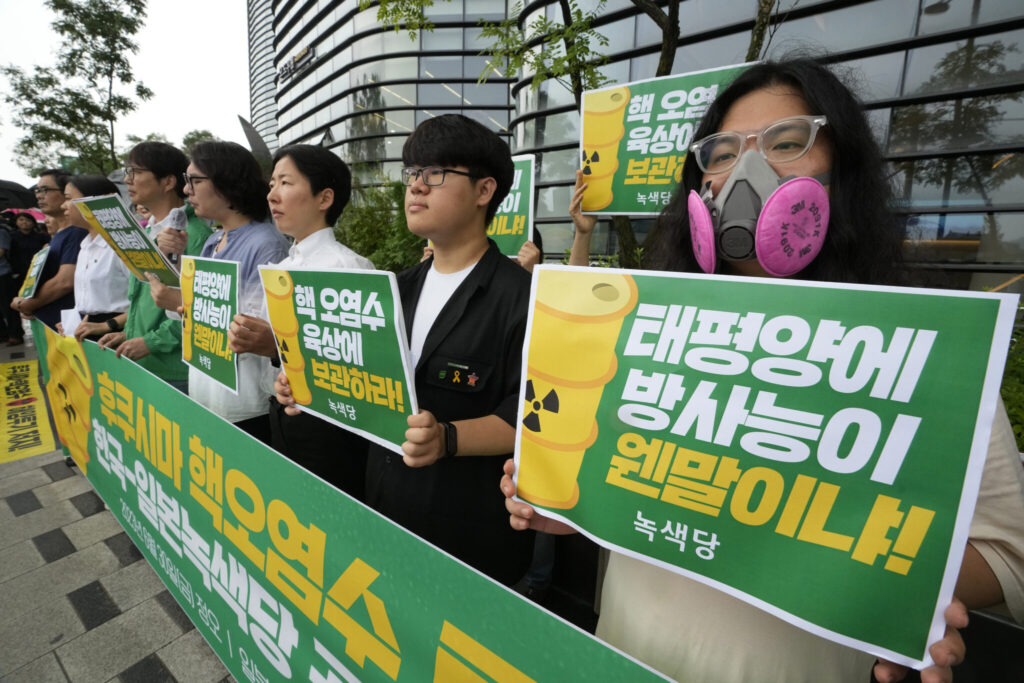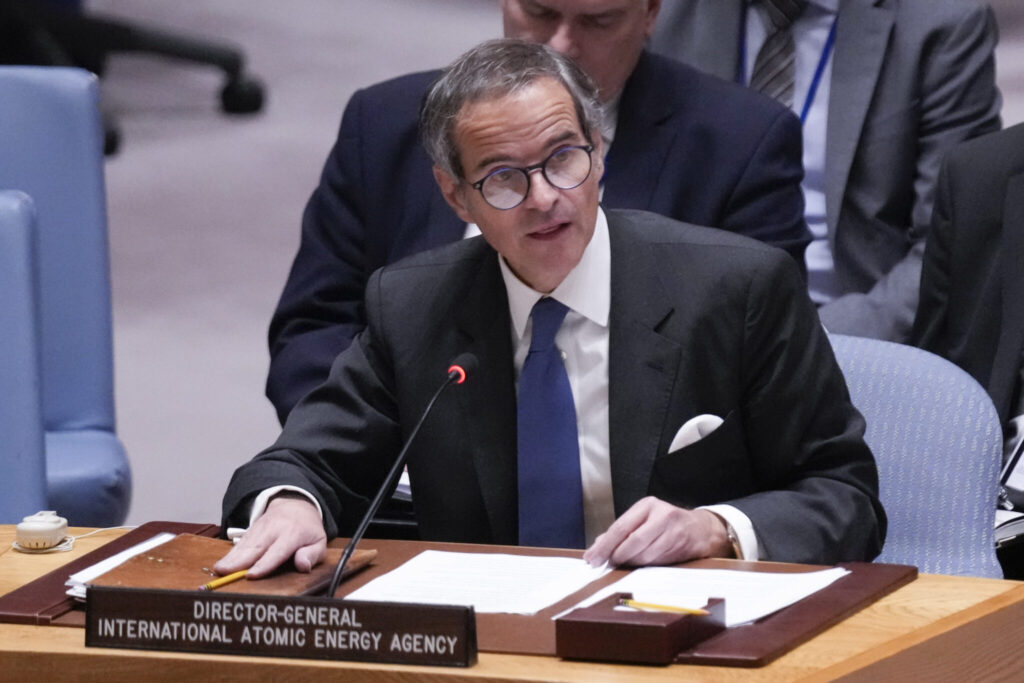Japan’s foreign minister Yoshimasa Hayashi said on Friday the International Atomic Energy Agency’s (IAEA) Director General Rafael Grossi will visit Japan during July 4-7 to see the Fukushima Daiichi nuclear power plant. Japan plans to release the water from Tokyo Electric Power Co’s Fukushima plant, which was destroyed during the 2011 nuclear disaster, into the sea this summer, raising concerns in neighboring countries. The Associating press Has the story:
IAEA Chief to visit Japan’s Fukushima plant
Newslooks- TOKYO (AP)
The chief of the U.N. nuclear agency will visit Japan next week to meet with Japanese leaders and see final preparations for the release of treated radioactive wastewater from the damaged Fukushima nuclear plant into the Pacific Ocean, officials said Friday.
Japan’s government hopes the visit by International Atomic Energy Agency head Rafael Mariano Grossi will add credibility to the discharge plan. It has been strongly opposed by local fishing groups and by neighboring South Korea, China and some Pacific Island nations over safety concerns.
Grossi will visit Japan July 4-7, Foreign Minister Yoshimasa Hayashi said. He is expected to meet with Hayashi, Industry Minister Yasutoshi Nishimura and Prime Minister Fumio Kishida and visit the Fukushima plant, which was damaged by a massive earthquake and tsunami in 2011.
“Japan attaches great importance to the efforts of the IAEA, which serves an important role in promoting nuclear nonproliferation and peaceful uses of nuclear energy. We hope to further strengthen ties between Japan and the IAEA through this visit,” Hayashi said.

The plant operator, Tokyo Electric Power Company Holdings, has completed construction of the equipment needed for the planned release, and Japanese regulators were finishing their final inspection on Friday. If everything goes well, TEPCO is expected to receive a permit in about a week to begin the discharge, though the starting date is still undecided, according to the Nuclear Regulation Authority.
Environmental activists in Seoul, South Korea, protested on Friday outside the Japanese Embassy against the plan.
To ease overseas concerns, Grossi is expected to visit South Korea, New Zealand and the Cook Islands after his visit to Japan, during which the IAEA is expected to release its final report on the wastewater release plan.
Japan has sought support from the IAEA to gain credibility for the plan and ensure that safety measures meet international standards. IAEA has dispatched several missions to Japan since early 2022.
All of its interim evaluation reports have been positive and similar results are expected in its final report. The organization has said it has no power to make any decision for the Japanese government, including stopping the wastewater release.
Kishida told Cabinet ministers at a meeting Friday about the water discharge that they should continue efforts to ensure safety and counteract any negative rumors by releasing full explanations, Hayashi said.

Government and utility officials say the wastewater, stored in about 1,000 tanks at the plant, must be removed to prevent accidental leaks and to make room for the plant’s decommissioning. They say the treated but still slightly radioactive water will be diluted to levels safer than international standards and will be released gradually into the ocean over decades, making it harmless to people and marine life.
Some scientists say the impact of long-term, low-dose exposure to radionuclides is unknown and the release should be delayed or contained in cement for use in construction materials. Others say the release plan is safe but call for more transparency in sampling and monitoring of the release.
The government says some false documents have been circulated, including one alleging that Japan pressured the IAEA to remove negative information from its final report.
“The IAEA is aware of the existence of the forged documents,” Hayashi said. “The IAEA’s comprehensive final report is a document prepared under the responsibility of the IAEA, and the Japanese government is not in a position to manipulate its contents,” he said. “I would like to stress that we are firmly opposed to any attempt to undermine the independence and neutrality of the IAEA with false information.”







